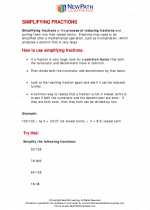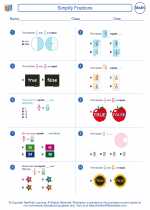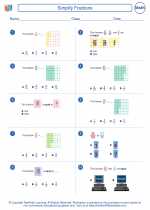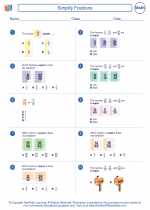Six-Sided Die: Explanation and Study Guide
A six-sided die, also known as a d6, is a cube with each face showing a different number from 1 to 6. It is a common tool used in many games and probability experiments. Understanding the properties and possibilities of a six-sided die is important for various mathematical and gaming applications.
Properties of a Six-Sided Die
Key properties of a six-sided die include:
- It has six faces, each labeled with a different number from 1 to 6.
- The opposite faces of the die always add up to 7 (e.g., 1 and 6, 2 and 5, 3 and 4).
- When the die is rolled, each face has an equal probability of landing face-up.
Study Guide
Here are some key concepts and topics to study related to six-sided dice:
- Basic Counting: Understand the basic concept of counting the number of outcomes when rolling a six-sided die.
- Probability: Learn about the concept of probability and how it relates to rolling a six-sided die. Calculate the probability of landing on a specific number or a range of numbers.
- Sum of Two Dice: Explore the possible sums when rolling two six-sided dice. Use this to understand the concept of probability distributions and the likelihood of getting specific sums.
- Games and Applications: Study how six-sided dice are used in various games, such as board games, role-playing games, and gambling. Understand the role of probability in these applications.
- Mathematical Notation: Familiarize yourself with the mathematical notation used to represent the outcomes of rolling a six-sided die, such as using the numbers 1 to 6 or the symbol "d6."
By mastering these concepts, you can develop a solid understanding of the properties and applications of six-sided dice, as well as strengthen your skills in counting, probability, and mathematical reasoning.
Good luck with your studies!
.◂Math Worksheets and Study Guides Sixth Grade. Simplify Fractions
Study Guide Simplify Fractions
Simplify Fractions  Worksheet/Answer key
Worksheet/Answer key Simplify Fractions
Simplify Fractions  Worksheet/Answer key
Worksheet/Answer key Simplify Fractions
Simplify Fractions  Worksheet/Answer key
Worksheet/Answer key Simplify Fractions
Simplify Fractions 

 Worksheet/Answer key
Worksheet/Answer key
 Worksheet/Answer key
Worksheet/Answer key
 Worksheet/Answer key
Worksheet/Answer key

Create And Print more Fractions worksheets with Simplifying Fractions
The resources above cover the following skills:
NUMBER SENSE
Know commonly used fractions (halves, thirds, fourths, fifths, eighths, tenths) and their decimal and percent equivalents. Convert between any two representations (fractions, decimals, percents) of positive rational numbers without the use of a calculator.